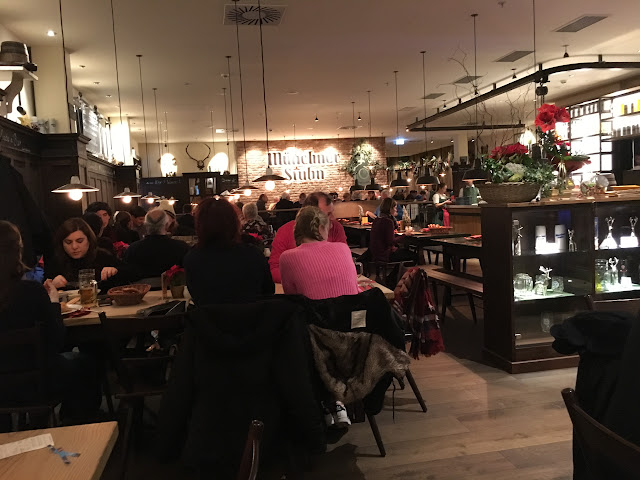On the fourth day, we went to Dachau.
Dachau is a suburban town about 30 minutes from Munich by train. The concentration camp is right in the middle of town. There was no secret about this place, or the others like it. Everyone knew it existed and what it was.
This was the first of the Nazi's concentration camps, set up in the mid 1930s, and was a model for what the system would become. It was established primarily for political prisoners, and sometimes people were actually released after a while. They killed plenty of people here, though; over 40,000. The crematoriums still exist. There are two separate crematorium buildings. They decided the first one wasn't big enough so they built a second, larger one.
It was very, very cold while we were here. We were dressed in our warmest clothing and it was tough being outside. It's almost unfathomable that any of the poorly clothed prisoners survived the winters here at all.
The barracks were torn down after the war, but they've rebuilt some of them as part of the memorial.
The administrative building houses an extensive museum today. There are no euphemisms here; they very explicitly tell you exactly what happened, from the rise of the Hitler and the Nazi Party through to the bitter end.
The current political climate made this all especially difficult to read about: the economic problems that allowed the Nazis to capitalize on fear and xenophobia to gain support. How nobody outside the Nazi Party took Hitler seriously; how the political establishment believed once he took power his support would collapse, because his incompetence would become impossible to ignore. How, although his support grew over time, he only ever truly had a small percentage of the population behind him, but the masses largely ignored what was going on as long as policies didn't directly negatively impact them. How the Nazis slowly chipped away at rights and freedoms of minorities and marginalized populations for years before they finally just started rounding them up and executing them.
Survivors of this camp are still alive. American soldiers who liberated it are still alive. And here we are again, with xenophobic, racist politicians and policies at the head of Western democracies. It is not good.
I'm glad we went to Dachau. I think everyone should go. But I don't feel like I need to go to a place like that ever again.
When we got back to Munich, it was weirdly disconcerting to come up out of the subway into a Christmas market full of people eating sausage and drinking gluhwein. Just as it was in the 1930s: life continued as usual for most people. At least those who were ethnic Germans able to pretend what was happening didn't have anything to do with them.
We walked inside several of the big churches around central Munich. This is St. Peter's, the oldest church in the area. There has been a church on this site since the 8th century. St. Peter's wasn't completely destroyed in the war, but it was damaged to the extent that repairs weren't complete until the 1990s.
We weren't feeling particularly touristy so we walked back through Marianplatz to our hotel.
They were cleaning our room so we sat in the hipster lobby for a while.
For dinner we went to Munchner Stubn, primarily because it was next door to the hotel. It ended up being great.
This was 12 Euros.
It was a tough day. The experience made me question my instinctive reaction to President Trump, which has been to mostly ignore the news and pretend nothing bad is happening. That's not a good solution. I don't know what the solution is, but it isn't that.














No comments:
Post a Comment